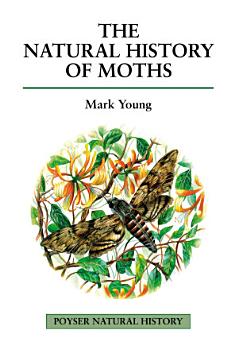The Natural History of Moths
Mark Young
dic 2010 · Bloomsbury Publishing
eBook
288
Páginas
reportLas valoraciones y las reseñas no se verifican. Más información
Información sobre este eBook
The Natural History of Moths covers all aspects of moth biology and ecology.
Moths are often as beautiful as butterflies, and with more than 2,000 species on the British list they are more numerous, more diverse and occupy a far wider variety of habitats and lifestyles. Yet for most naturalists they remain a little-known and neglected group. Not since E. B. Ford's 1955 New Naturalist volume has the biology of moths been treated in a popular book. Here, Mark Young sets out to redress this imbalance and to show the great variety and interest of these sometimes striking, sometimes subtle insects. He draws together the results of amateur study and the latest scientific research to paint a broad picture of all aspects of moth biology, brought to life with many fascinating examples from the moth faunas of Britain and abroad.
The breeding, feeding, distribution and life-history ecology of moths are described, in addition to more specialised aspects of their biology, such as pheromone attraction of mates, interactions with host plants, and the anti-predator responses that many moths use to foil bats and birds.
While butterfly conservation problems have often provided headline news in the press, the difficulties facing moths have received much less attention. However, threats arising from the loss and degradation of natural habitats have had no less effect on moths, and have endangered many more species. The status and fortunes of many moths are still unknown, but a growing number of success stories. such as that of the Black-veined Moth, point the way to better practice for the future, and to the preservation of this enormous wealth of beauty, diversity and natural history interest.
Moths are often as beautiful as butterflies, and with more than 2,000 species on the British list they are more numerous, more diverse and occupy a far wider variety of habitats and lifestyles. Yet for most naturalists they remain a little-known and neglected group. Not since E. B. Ford's 1955 New Naturalist volume has the biology of moths been treated in a popular book. Here, Mark Young sets out to redress this imbalance and to show the great variety and interest of these sometimes striking, sometimes subtle insects. He draws together the results of amateur study and the latest scientific research to paint a broad picture of all aspects of moth biology, brought to life with many fascinating examples from the moth faunas of Britain and abroad.
The breeding, feeding, distribution and life-history ecology of moths are described, in addition to more specialised aspects of their biology, such as pheromone attraction of mates, interactions with host plants, and the anti-predator responses that many moths use to foil bats and birds.
While butterfly conservation problems have often provided headline news in the press, the difficulties facing moths have received much less attention. However, threats arising from the loss and degradation of natural habitats have had no less effect on moths, and have endangered many more species. The status and fortunes of many moths are still unknown, but a growing number of success stories. such as that of the Black-veined Moth, point the way to better practice for the future, and to the preservation of this enormous wealth of beauty, diversity and natural history interest.
Acerca del autor
Mark Young was brought up in rural Worcestershire and Herefordshire where, from primary school days, he became interested in wild flowers and then butterflies and moths. At Birmingham University he added freshwater animals, especially molluscs and water beetles, to his interests, but moths have remained his main love, particularly the study of their distribution and life history.
In 1973 Mark moved to Aberdeen University, and he has lectured there on Zoology ever since. His research has focused on freshwater pearl mussels, insect assemblages in forests and farmland, and the comparative ecology of rare moths and butterflies. He has also been actively involved with the Scottish Wildlife Trust and with conservation studies for Scottish Natural Heritage.
Mark's special enthusiasms are the moths of the Scottish highlands, and particularly of the islands. With family and friends he has visited many of these, always in the hope of finding new colonies of burnet moths or obscure 'micro-moths', of which he is particularly fond.
In 1973 Mark moved to Aberdeen University, and he has lectured there on Zoology ever since. His research has focused on freshwater pearl mussels, insect assemblages in forests and farmland, and the comparative ecology of rare moths and butterflies. He has also been actively involved with the Scottish Wildlife Trust and with conservation studies for Scottish Natural Heritage.
Mark's special enthusiasms are the moths of the Scottish highlands, and particularly of the islands. With family and friends he has visited many of these, always in the hope of finding new colonies of burnet moths or obscure 'micro-moths', of which he is particularly fond.
Valorar este eBook
Danos tu opinión.
Información sobre cómo leer
Smartphones y tablets
Instala la aplicación Google Play Libros para Android y iPad/iPhone. Se sincroniza automáticamente con tu cuenta y te permite leer contenido online o sin conexión estés donde estés.
Ordenadores portátiles y de escritorio
Puedes usar el navegador web del ordenador para escuchar audiolibros que hayas comprado en Google Play.
eReaders y otros dispositivos
Para leer en dispositivos de tinta electrónica, como los lectores de libros electrónicos de Kobo, es necesario descargar un archivo y transferirlo al dispositivo. Sigue las instrucciones detalladas del Centro de Ayuda para transferir archivos a lectores de libros electrónicos compatibles.






